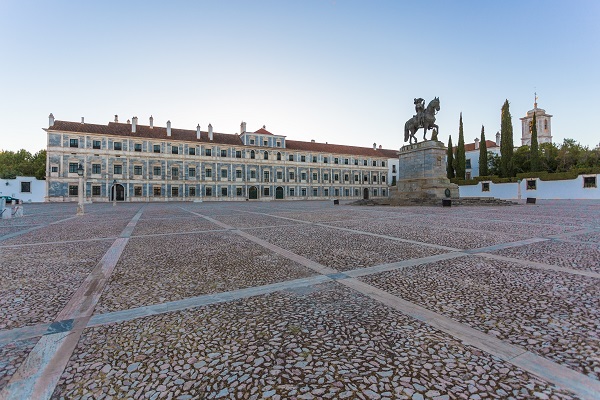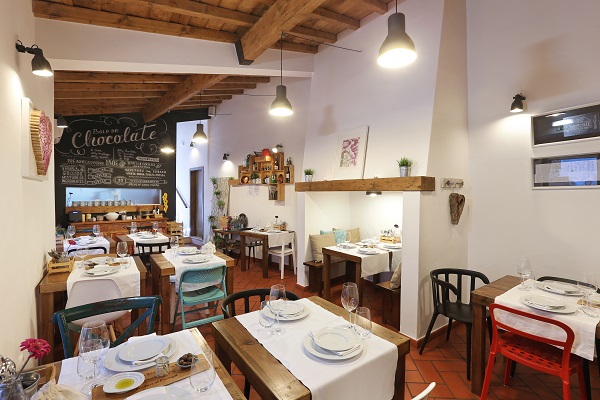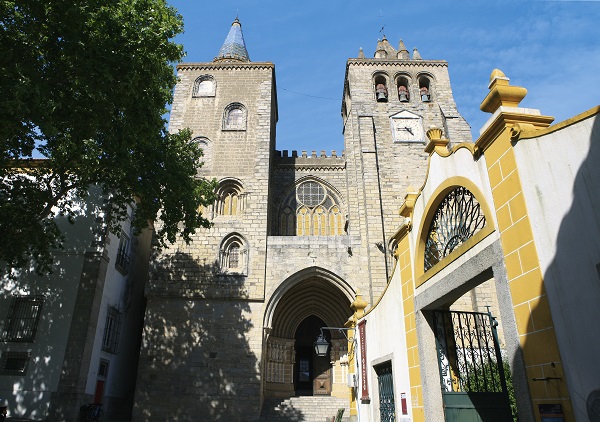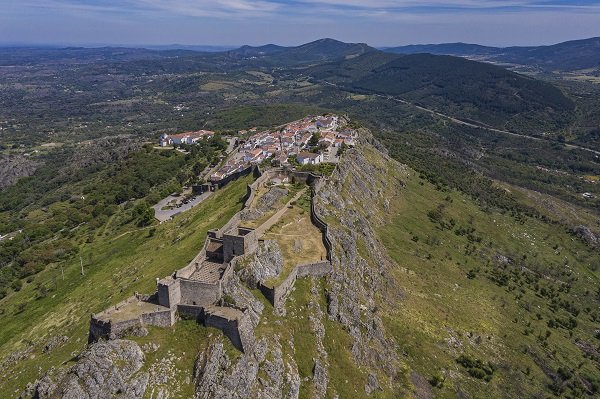Time away is precious. And between flights, lodging and meals, it can be expensive. No one wants to wait in line, be lost in a crowd, or stuck at a touristy eatery. In the last ten years Portugal has burst onto the world stage as a major travel destination. But, as a new destination, folks went to what they knew: Lisbon, Lagos, and Porto. All fantastic destinations, but just a small part of what makes Portugal so special. Imagine just seeing New York and Orlando, but skipping Charleston, Savannah and other gems on the way. Lisbon or Porto are great starts for a trip — but then explore the country with an eye for the authentic, charming and unforgettable. So, as lines formed, and crowds took selfies, a whole other section of Portugal remained a bit of a secret. So, for those who want to skip the lines and crowds here are some hints to find the real Portugal. And the good news is, it is not far, and kinda amazing.
Royal Options
Sintra is amazing, but there are other royal palaces too. Portugal was a monarchy from 1143 to 1910 - and the kings and queens had plenty of palaces that they loved to escape to. Sintra is absolutely amazing, but many travelers don’t know that two other royal palaces are not far from Lisbon, in Queluz and Mafra. The University of Coimbra is built into a former royal palace, and the castle of Leiria was built for royals. But, in the Alentejo there is a royal tour that highlights the good, the magnificent and the struggles of being a monarch.
Start in Estremoz. This was a royal city for generations, from the impressive walls with the ancient keep of the castle that sails above the plains. Built of local marble it is white and decorative. The oldest part of the castle dates from the 13th-century reign of King D. Dinis. This was a popular escape for King Dinis and his wife, the Sainted queen Isabel, who dedicated her life to helping the poor, and preventing war between Portugal and Spain. Isabel died on July 4, 1336, in the castle of Estremoz. The castle, the royal chapel and all its history are free to explore Tuesday through Sunday 9 am to 5 pm. And, part of the former palace is now a Pousada.


The Paço Ducal de Vila Viçosa is a huge royal palace in the royal town of Vila Viçosa. This was the seat of the Bragança dynasty that ruled Portugal from 1640 to 1910 when King D. Manuel II, was deposed in the 5 October 1910 Republican Revolution. Set on a grand square, the palace is encircled by convents, churches and a Pousada.
The principal facade is of pink Estremoz marble, with three floors in a grand and classical style. The main entryway has magnificent tiles panels showing great moments in Portuguese history. The many public rooms are built for a king, including the e Sala das Tapeçarias, the Sala do Gigante, the Oratório da Duquesa and the Sala de Medusa. There is a sizable armory and a magnificent kitchen with huge ovens, wine cellars, and more copper than you have ever seen.
In the distance, on a high mountaintop stands the fortified town of Évora Monte, walled around a massive castle that soars above the horizon. Here two royal brothers, both kings, ended the Portuguese Civil War. Two brothers, one an absolutist, the other in favor of a constitutional monarchy, fought it out for the future of Portugal. The final battle at Asseiceira on May 16, 1834, ended six years of civil war; a peace treaty was agreed to in a simple house on May 24, 1834, at Évora Monte. Today the town is a wonderful escape with its ancient churches, cobble stone streets, sweeping views, and many local arts and craft shops.
New Thinking in Cuisine, Young chefs, Fresh Ideas
Ancient but trendy Estremoz is full of up and coming places to eat, run by young chefs. This marble city of some 8,000 people has become the go-to dining spot, after Évora, for a hot and emerging food scene.


Mercearia Gadanha
A bistro with sushi, local classics, and a new approach to Alentejo cuisine with a bright setting right on the main square. This gourmet eatery is made to feel like a classic corner grocery store. Add to that a long list of great-wines, with all the local wineries. The new Casa do offers fresh pasta, and pizza that is remarkably good. https://casadogadanha.pt/restaurante/
Howard's Folly Restaurant
This castled winery and restaurant sets the standard for fine dining, not in the city, but the region. An elegant concept, which elevated traditional ingredients in an international version. Try tasting menus, enjoy the grand dining room, and dine on a fusion of Portuguese and Asian cuisines. And, the wines are small batch, made just up the road. A real elegant experience.
Cadeia Quinhentista
Dining at the Cadeia Quinhentista is taking in centuries of history. This former prison of Estremoz is a monument of the sixteenth century, with two floors of local marble, and the food is quite good but so are the views from the top of the building where there is a terrace with views over the city and the local olive and wine groves.
Skip the Lines to a Religious Experience
On any given day there are lines to see some of the most popular monasteries and churches in Europe. But not far from Lisbon, significant religious sites are awaiting with no lines, and amazing stories to tell.
Check out the main sites that cannot be left out of your trip, but won’t keep you waiting:
Nossa Senhora da Assunção Church, former Cathedral of Elvas
Designed by Francisco de Arruda in 1517 and set in Praça da República, in Elvas, it was an episcopal seat until the 19th century. Its design features Manueline side doors, the Baroque chancel and Baroque gilded altars finished in marble. Attached to this grand church is the museum of sacred art.
Convent of the Congregados in Estremoz
The Convento dos Congregados in Estremoz has a rich history starting in the 16th century when it was used as a palace. Its facade is crafted in beautiful pink marble and its tiles depict the life and miracles of Saint Philip. Currently, it also houses the City Hall, the City Library and the Museum of Sacred Art.
Museum of Sacred Art of Moura
Opened in 2004, the Museum of Sacred Art of the city of Moura is located in the Church of São Pedro, a building that has magnificent 17th century tiles. Most of the exhibitions highlight hundreds of pieces that demonstrate the religious traditions of the region.

Cathedral of Évora

Standing out for its tall silhouette in the walled city, the Basilica Sé de Nossa Senhora da Assunção is the largest medieval cathedral in Portugal. Its construction began in 1186, and was completed by 1250. The structure is entirely in local granite, marked by the transition from the Romanesque to the Gothic style. The church has a unique crucifix called the "Father of the Christs," which is above the painting of Our Lady of the Assumption, allegorical statues of Saint Peter and Saint Paul and a spectacular organ from the Renaissance period.
Our Lady of the Annunciation Church in Mértola
The Mértola Church is quite close to the castle, just down the slope of the hill. Dating back to the twelfth century, it was built to be a mosque and rededicated as a Christian church during the 13th century. Therefore, the different styles used in the building are noticeable: Muslim, Gothic, Manueline and Renaissance. Among the modifications, the main altar was moved to the North wall and the qibla, which indicated the direction to Mecca, was removed.
Our Lady of Guadalupe Chapel in Serpa
Set in the landscapes of the Serra de São Gens, the Ermida de Nossa Senhora de Guadalupe is just 1 mile from Serpa and boasts simple architecture of the Mudejar style of the Iberian Peninsula. The small refuge houses the image of the patron saint who is honored in a great celebration promoted for the arrival of spring, which begins at Easter and lasts for five days. The event includes processions, parades and masses.
Walled and Wonderful
Obidos is a great escape, with its strong walls, cobbled streets and sweet shops. But with it comes a rush of visitors, so we have an alternative suggestion: There are many walled towns, from Marvão to Monsaraz, but we want to offer up the suggestion of Castelo de Vide.
The medieval castle, surrounded by the town's elegant houses, dominates the landscape of the foothills. The best way to appreciate the town's medieval charm is to stroll the winding streets, narrow São Mamede mountains. Between the castle and the renaissance town fountain, are a series of narrower streets that define an ancient Judiaria (Jewish Quarter) dating back to the time of D. Dinis in the thirteenth century. One of the best preserved Jewish areas in Portugal, with a collection of religious and civil architecture from the Gothic period, including a former synagogue. The Capela do Salvador do Mundo is the oldest chapel in the region with panels of blue and white azulejos, just one of the town's 24 churches.



